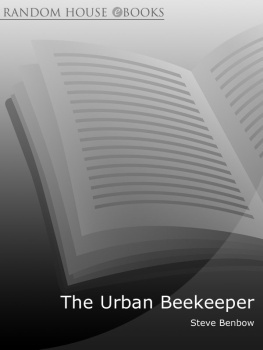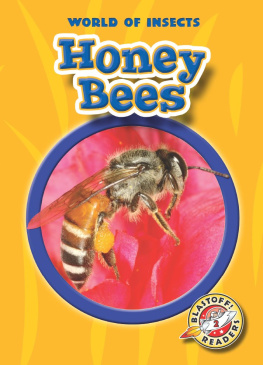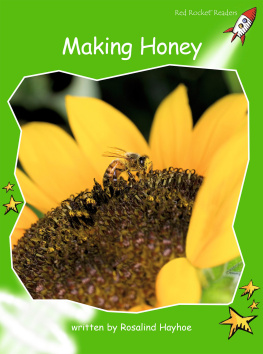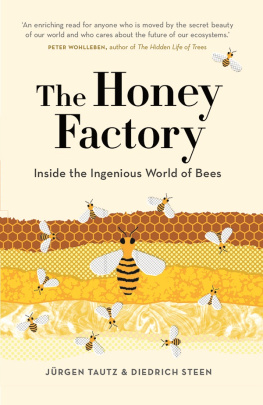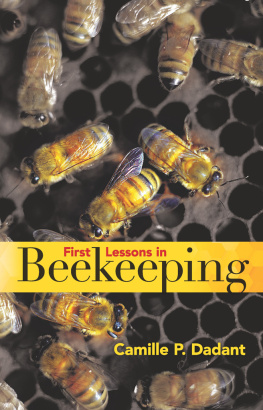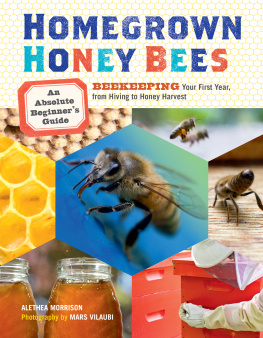PRACTICAL BEE KEEPING
AND HONEY PRODUCTION
By
D. T. MACFIE
ILLUSTRATED

Made and Printed in Great Britain
A FOREWORD
THERE are two ways of endeavouring to awaken and foster an interest in Apiculture, or Bee Keeping. One is to paint a highly coloured word picture or tell a glowing story about handsome profits obtainable from a trifling capital outlay and representing the labour involved in management of a few hives as being purely a pleasant manner of occupying a leisure hour at odd times. In their desire to enlist recruits to the ranks of bee keepers some enthusiasts have adopted some such policy, and first appearances have tended to encourage the opinion that those are tactics which prove their success by results.
We have, in fact, known considerable numbers of people who, after hearing or reading of great weights of honey being secured from one or two hives of bees, have invested a pound or two in starting what they hoped would speedily develop into thriving and lucrative apiaries. Alas, too often the handicaps have proved to be too formidable, and a great many people who have begun with an effervescing enthusiasm have soon dropped their new hobby with feelings of disillusionment and disappointment!
The other way to increase and advance a genuine and lasting interest in this pursuit is to be clear and candid at the outset and all the way through, stating plainly when, where, and by whom bees may be kept with reasonable prospects of success. Then it is well to tell those who are anxious to learn just those details of management which are essential to the welfare of the bees and calculated to increase the quantity and maintain the quality of the honey they produce.
The first few paragraphs of this book will suffice to carry conviction that the author entertained no idea of adopting the unwise policy we have first described. The second plan was undoubtedly made his aim at the outset, and careful study of each chapter in proper sequence will afford ample proof that he faithfully adhered to his purpose right to the end of his task. We have no hesitation in adding that even the most inexperienced novice should feel quite competent to venture upon bee keeping on practical lines when he has assimilated the very sound information here placed at his disposal.
Apiculture has, indeed, made very remarkable strides of progress since the days of our earliest personal acquaintance with bees in the old-fashioned bell hives of plaited straw. Even when we advanced so far as to possess our first wooden hives, they were rather crude affairs by comparison with the types of structures in general use to-day. In fact, we readily confess that, after the lapse of some years since we had the handling of bees, much that we have read of Mr. Macfies up-to-date information has served to impress us with the realisation that scientific apiculture has left us sadly in the rear.
We do not consider it to be in the nature of bold prophecy to express the opinion that this book will be the means of starting many at bee keeping and will help them to get well away on the road to success.
A. J. MACSELF.
CONTENTS
FULL-PAGE PLATES
ILLUSTRATIONS IN TEXT
CHAPTER ONE

BEE KEEPING AS A PRACTICAL PROPOSITION
WHEN is bee keeping a practical and profitable proposition? That is a question which is very frequently asked. The answer is not so easily given. Bees can be remunerative by comparison with other agricultural side-lines, and well kept they show a profit far exceeding that of any other. But before handsome returns can be confidently anticipated, there are several factors to be taken into account.
It is useless, for example, to expect an abundant honey flow in large industrial areas or in the suburbs of great cities. Cases are recorded where bees have even been kept on the roofs of city factories, but such colonies will cost more to feed than they will return in the way of honey. Similarly in the case of suburban gardens. Flowers in near-by gardens do not provide the bees with a wide enough field.
Where food is ample, as in clover and heather districts, is where bees will, if properly tended, show a really handsome profit, though the impression, still prevalent, that bee keeping consists merely of putting a colony in a hive and taking a hundred pounds of honey off at the end of the season, must not be fostered. A really strong colony will yield as much as fifty to sixty shillings clear profit in a good year, but a fair average must be counted nearer to twenty or thirty shillings. That, in view of the fact that a start can be made for as little as four or five pounds, must be reckoned a more than usually remunerative return.
There is, of course, one thing which must always be taken into account with any agricultural or horticultural venture in this country, and that is the climate. In a bad season, which in the case of bees means a wet season, they will be able to do nothing more than keep themselves. It must, too, be clearly understood that bees, to produce a handsome surplus, must have proper care and attention. This does not mean that the hobby makes great demands on the bee keepers time. For nearly half of the year there is nothing to be done, and from the spring onwards an average of fifteen to twenty minutes per hive per week is all that is required. Another pointan apiary takes up little space. A single hive can be accommodated in four square feet and quite a number in an average-size garden.
To sum up, it may be said that bee keeping is not an occupation at which anyone should attempt to make a living, for, as already mentioned, it is much too dependent on climatic conditions, and the vagaries of the weather in this country are not notorious without reason. The countryman, however, even though he have little space at his disposal, will find it a profitable occupation, especially as there is always a demand for good quality honey. In proof of this fact it need only be mentioned that every year many thousands of pounds of foreign honey are imported into this country, much of it inferior, and none of it quite equal to the standard of the home-produced article.
Honey, too, when extracted is more or less imperishable. Carefully stored it will keep for years in perfect condition, with the result that there is no need to unload ones stores on a fallen market during plentiful years.
As a hobby pure and simple bee keeping ranks high, and, despite the wholesome regard with which those uninitiated in the craft are apt to regard the insects, there are few more delightful recreations. Properly handled bees are more or less harmless, and the mind cannot fail to benefit from the study and appreciation of their wonderful social life.
CHAPTER TWO

HOW BEES WORK
BEFORE ever a start is made, the would-be bee keeper must understand something of the life and the habits of the honey bee. This does not imply laborious research into the insects natural history; all that is required is a fair knowledge of how a colony works and lives.
The honey bee (Apis mellifica) differs in one important respect from the bumble bees and the various other kinds indigenous to this country. They are social insects, living in large colonies and working for the common good. Most of the other types are solitary or non-gregarious. It is this social habit that makes the honey bee so valuable an insect. By reason of their numbers they are enabled to maintain a winter temperature in the hive which is high enough to ensure their survival in any normal winter. Were the numbers of any one colony to be greatly reduced, it is very doubtful if they could come through unscathed, for the smaller the number of bees in a hive the lower the temperature will be, and the insects are extremely susceptible to cold.


